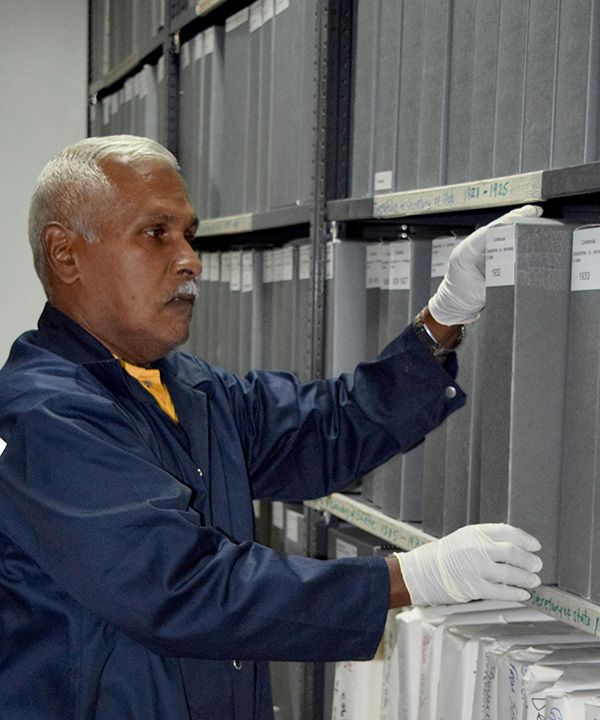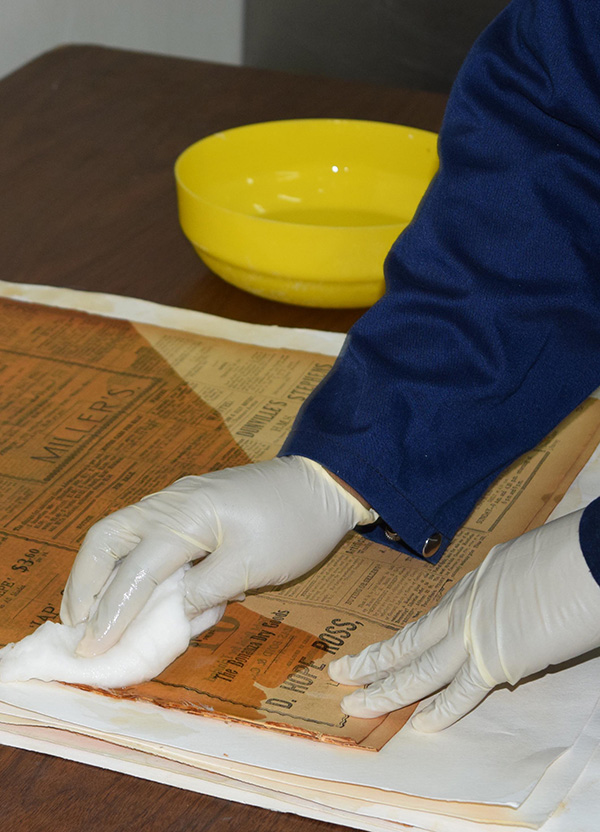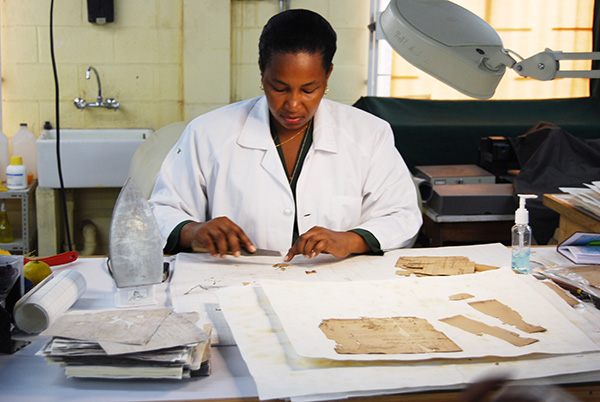 The National Archives has a fully-equipped Conservation Laboratory which is responsible primarily for the conservation and restoration of archival records in the National Archives’ collections. Disaster recovery is also offered on a limited basis to public institutions, depending on the severity of the damage and availability of resources. Advice on archival storage requirements is offered to public institutions, and storage and vault guidelines have been developed.
The National Archives has a fully-equipped Conservation Laboratory which is responsible primarily for the conservation and restoration of archival records in the National Archives’ collections. Disaster recovery is also offered on a limited basis to public institutions, depending on the severity of the damage and availability of resources. Advice on archival storage requirements is offered to public institutions, and storage and vault guidelines have been developed.
The Conservation Laboratory is mainly a paper-based laboratory applying preservation and conservation treatment to loose and bound textual (handwritten and typewritten) documents, books, maps, and other paper-based records.
The preservation and conservation of the nation’s valuable archival records are carried out using three methodologies:
Preservation or Preventive Conservation consists of indirect actions to retard deterioration and prevent damage by creating conditions optimal for the preservation of the collection. Storage with the right environmental controls and regular monitoring remain the first and best means of defence in safely preserving archival collections.
 Housing enclosures to provide physical support and protection as well act as a buffer against adverse or fluctuating environmental conditions is another preventative measure. Integrated pest management and emergency preparedness are other forms of preservation measures.
Housing enclosures to provide physical support and protection as well act as a buffer against adverse or fluctuating environmental conditions is another preventative measure. Integrated pest management and emergency preparedness are other forms of preservation measures.
Conservation consists mainly of direct actions carried out on damaged or deteriorated documents with the aim of stabilising their condition and retarding further deterioration. Conservation treatment attempts to preserve records in their original format.
Paper restoration consists of a direct action carried out on damaged or deteriorated paper archival records with the aim of returning to its original condition.
Work of the Conservation Laboratory
Conservators of the Lab examine archival records to assess their condition and composition before recommending remedial conservation treatment to arrest deterioration or improve their condition. The condition and treatment used are normally documented. Conservation treatments are required to be reversible.
 Some of the conservation treatments used by the Conservation Lab include:
Some of the conservation treatments used by the Conservation Lab include:
- de-acidification
- paper and book restoration
- book binding
- Mylar or polyester film encapsulation
- Custom housing of documents or books such as rare books
The Lab’s conservators also stabilize collections for use by researchers and for digitization, prepare materials for exhibits, respond to emergencies affecting public records, and provide advice on the proper storage and handling of records to public entities.
The National Archives Conservation Laboratory ensures that the item’s authenticity is not compromised by ensuring minimal intervention for any repair work done on any item.



